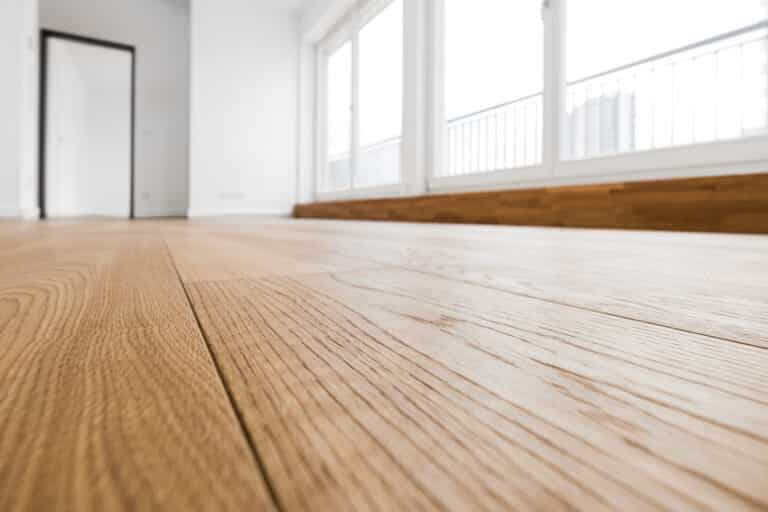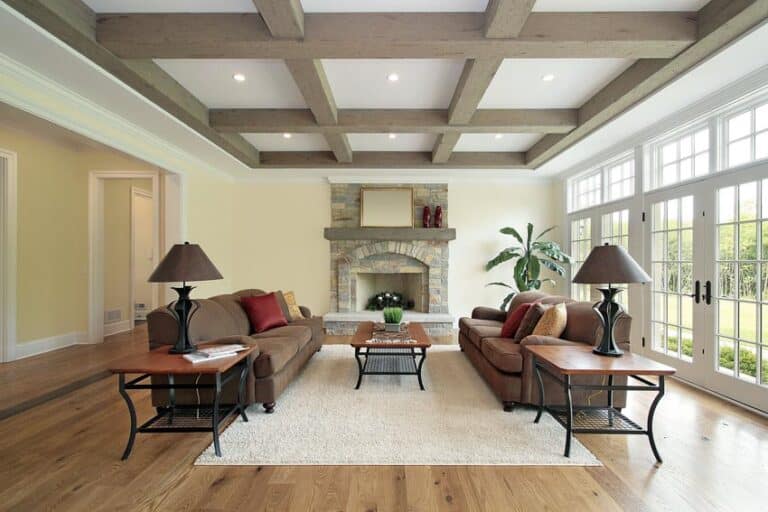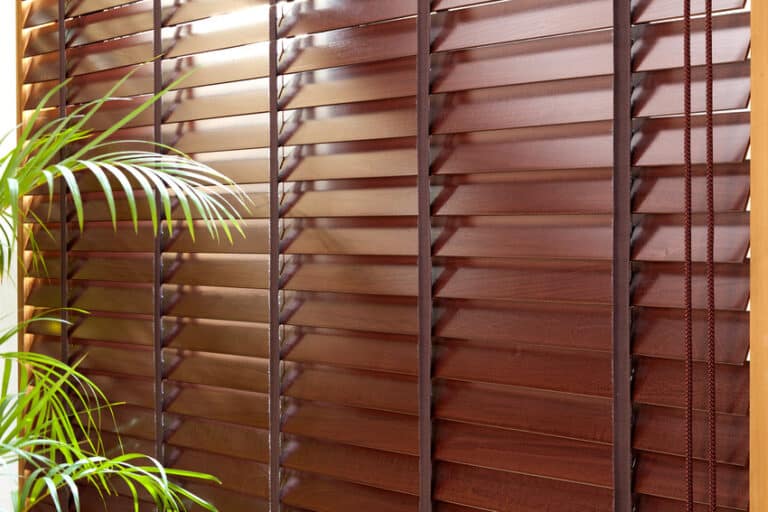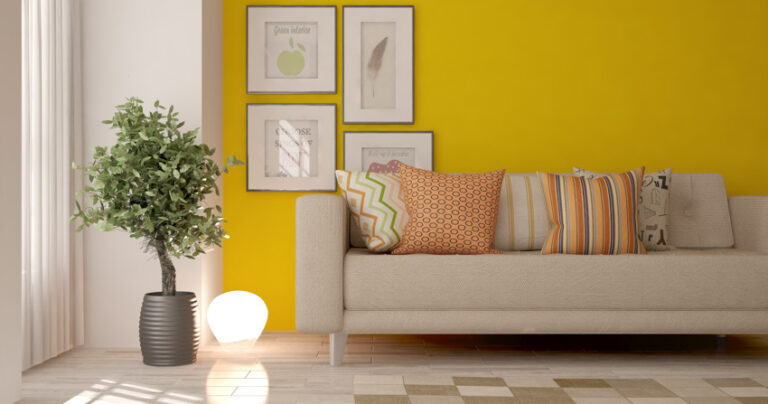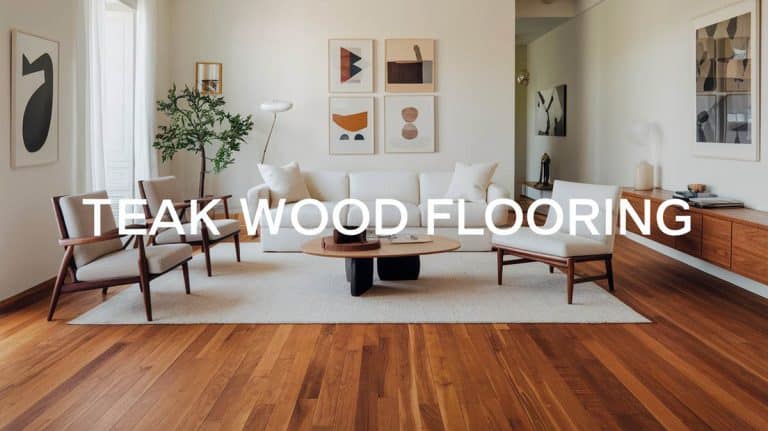Popular Types Of Walnut Hardwood Flooring (Design Ideas)
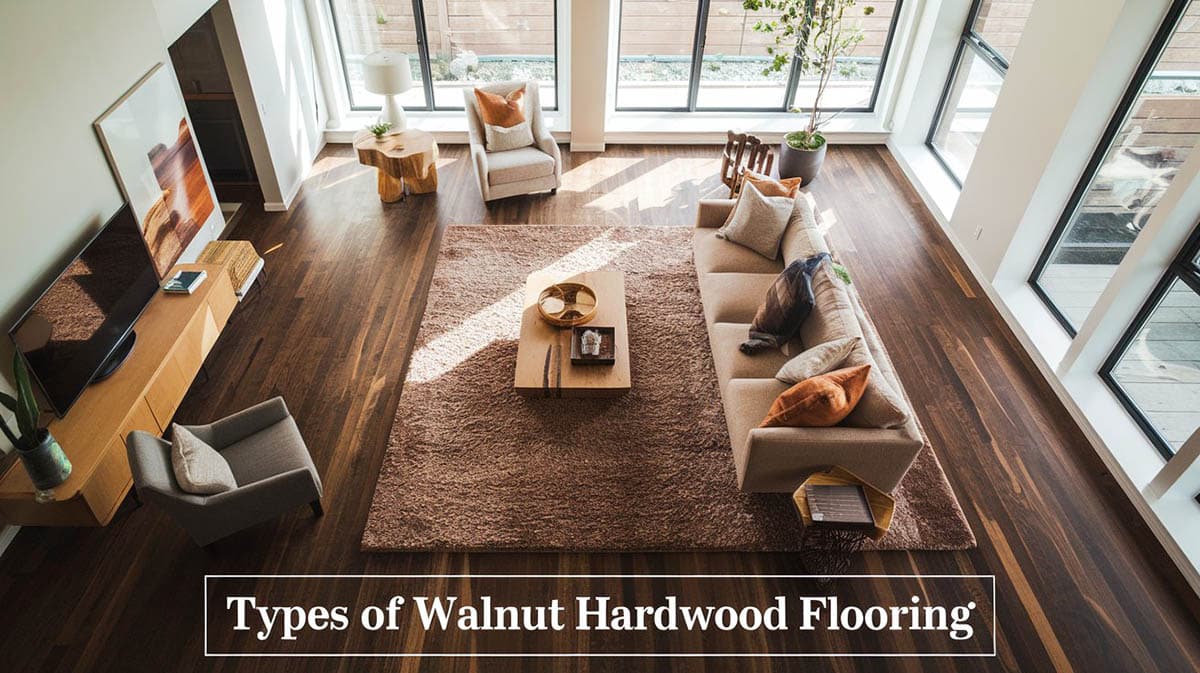
Hardwood flooring is a great addition to any home; if you have made it here, you have decided on walnut. There are still a few decisions to make, though: what type of walnut and what color to stain! Below are some pros and cons and examples of different options you will be presented with.
Types of Walnut Hardwood Flooring
The type of walnut you pick will have the biggest determination on the price and appearance of your hardwood floors. Each wood has a different hardness rating as well as a different cost, grain, and color associated with it.
The most popular choices for walnut hardwood are American, Brazilian, Gunwood, and Acacia walnut. Some examples of the types of walnut floors are listed below. Visit our types of hardwood flooring gallery for more popular styles.
American Walnut Floors
American walnut is also known as common walnut. This wood had a warmer purple hue with lighter brown layers. To make a darker color, this wood will be steamed during the manufacturing process. It has a wide variety of different grains available. Typically, it will have a straight grain, but getting a wavy or curly grain is no problem with a little extra cost.
It is low on the Janka scale, at 1010, meaning it will be easier to dent or scratch. This can be counteracted by maintaining the floors and keeping them in good condition. Adding rugs and mats can help, and avoiding wearing any hard shoes inside.
Another way to maintain your wooden flooring is to sand and refinish it every 3- 5 years. This tends to be the less expensive option than having to completely replace the flooring every 10 years.
Black Walnut Planks
Black walnut is sometimes known as Gunwood. This is because it had a very dark color with very deep grains. The heartwood will be a dark brown to almost purple-black, while the sapwood is a creamy white. Sometimes, the manufacturers will steam the wood to make the two colors blend better. This tree is grown in the United States as well, which puts it under the category of “American” black walnut.
Flooring from this wood is raw and natural and will bring a rustic, eclectic feel to a room that you will not even believe. Due to that, it will fit in with almost any style imaginable: zen, Scandinavian, or even industrial. It is such a versatile wood while still being extremely unique with an amazing array of designs.
Brazilian Walnut Boards
Brazilian walnut is also known as Ipe (pronounced ee-pay), which is the Brazilian word for walnut (lapacho). This wood is typically very dark in color as well as harder than any other walnut species. Ipe is extremely resistant to insect damage and mold. It is a lot harder on the Janka scale, a 3684 to be exact, which is way above any oak flooring and is at the top of the list for hardest flooring.
This will make flooring from this material a better option for high-traffic areas or anywhere in the home looking for high durability. Not only is this wood extremely long-lasting, but it is also an exotic wood that will bring an elegant and regal look to any space.
Asian Walnut Parquet
Asian walnut is also known as Acacia walnut. This wood is a light honey color with distinctive grain patterns. The most natural form of this flooring is an unstained piece with a clear coat over the top, but there is also a variety of other options ranging from browns to creams. It is found in Southeast Asia, India, Africa, and Australia. It has a unique grain, with big swirls and a loose structure, which will add a good contrast in larger spaces. This type of wood, in particular, rates 2300, higher than the more common choices of oak, which are only 1300.
Walnut Floor Options
When thinking about hardwood flooring, your mind will automatically go to the typical, well-known solid hardwood styles. It should be known that there are other more cost-effective options. Though the qualities of each product are different, sometimes going with the engineered or laminate flooring can be a project and budget saver, with almost exactly the same appearance.
Solid Walnut
Solid wood flooring is a piece of wood straight from the tree. It is, as the name suggests, solid wood. This type of flooring can be sanded or refinished many times to bring it back to life. Solid wood flooring will typically come in plank form, the most common varieties being 2 ¼” to 5” wide with a thickness of ¾”. These will most commonly be found in both hand-scraped and smooth finishes.
Walnut Engineered Wood
Engineered wood flooring is also made of real wood, but they are also made using multiple types of wood or wood veneers. Engineered wood flooring will also come in plank form, but the widths range from 3” to 5” with a thickness or ¼”. Since these will be quite a bit thinner than the solid flooring, it will be smart to take caution and check wear layers on products before purchase.
Walnut Laminate
Laminate flooring is made of synthetic materials laminated together to create a piece of flooring. This photo will be applied to the top layer that often appears as wood or stones, in this case, walnut wood.
Laminate flooring will typically come in at 5” wide planks. Laminate will be able to have a wider variety of color choices. The walnut-look laminate will have an inviting and warm look that can be easily matched in any room. Choosing from dark or light colors it will still give a luxurious appearance with an average cost.
Unfinished Walnut
While there are many different finishes and stains you can choose to apply to these hardwood floors, sometimes leaving them unfinished will let the natural beauty of the wood be the most beautiful solution. There are multiple different grades of wood that will help differentiate. For the unfinished look, you will need to look for the common or “character” grade. These are typically quite colorful, with shades of black, dark brown, light brown, and white streaks. This can give a space a rustic or cabin-like feel.
If you are buying unfinished flooring and expecting to finish it yourself, keep in mind that no matter what you do, it will not be the same quality as professionally finished flooring and care must be taken to keep the flooring in pristine shape.
Wide Plank Walnut
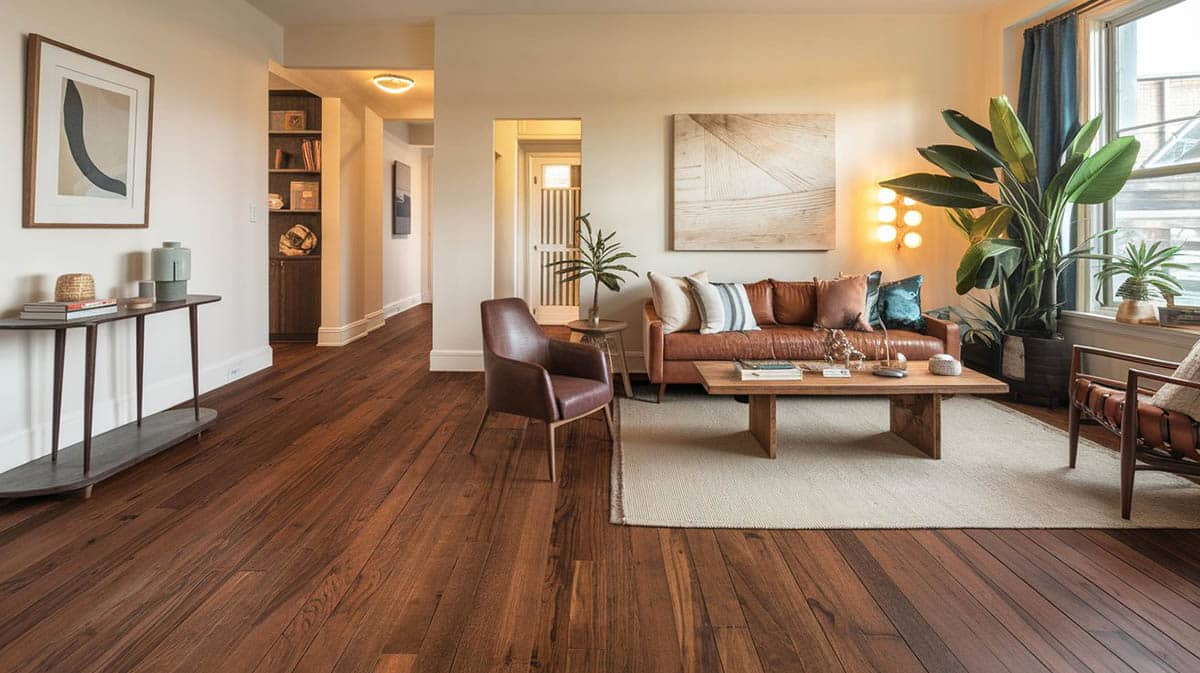
Wide plank floors can be used in most combinations of flooring and finish. This method is a unique option that will create a warm, rich feel that will make a room stand out. Typically, wide planks are 5 inches to 10 inches wide, but they can go up to 12” wide. These will have a quicker install time due to not needing as many planks to complete the surface.
Walnut Floor Stains
Even if you have picked the wood for your floors based on durability and price, you still have one last chance to change the color! If you haven’t fallen completely head over heels for the look of the wood but still listened to your head to get the right qualities, here is where it pays off.
While this hardwood is beautiful in its natural state, you can always get another color to better match your vision. If you wish for a lighter color, bleach can be applied, creating a whitewashed appearance. If you prefer a darker color, dark stains can also be applied to the floors.
Whether the floors are bleached, stained, or left natural, finishing them is also possible. Oil finishes can give an elegant look, or if you want a high-gloss finish, polyurethane varnishes can be applied to the surface. The colors virtually range from snow-white sapwood to deep brown heartwood, making it the perfect fit for any style.
Walnut Hardness Rating
You have heard the word Janka rating a few times and are probably wondering what exactly that means. Janka rating measures the force needed to embed an 11.28mm diameter steel ball halfway into a sample of wood. This will measure the hardness of the wood and help determine which woods are suitable for which applications.
Wood grain directions can make a difference in the testing, so they will test perpendicular to the grain for side hardness. They can also test radial hardness, which is measured in the direction of the tree’s center, and tangential hardness, which is measured on a tangent to the tree’s rings. Occasionally, it is measured on its end, which does but test the cure surface of a tree stump. Balsa wood is the softest wood, coming in at 70 lbf, and the hardest is Australian Buloke at 5060 lbf.
These are measured in pounds-force in the United States; this is often confused due to each country using its system of measurement and is often just referred to as “# janka”. This test is used to determine the strength of each wood to determine what it can be used for.
Walnut Janka Rating
Brazilian Walnut: 3684 lbf
American Walnut: 1010 lbf
Asian Acacia Walnut: 2300 lbf
Walnut Flooring Price
This material can range in price depending on what sort of material you pick. Solid wood will be the most expensive, coming in at around $4- $12 per square foot. The price will depend on style, finish, size, amount, etc. Engineered floors made from this hardwood will range in cost from $2 to $10, with an average of about $4-$5 per square foot. Down to a popular middle ground, we have laminate floors coming in at around $1 to $8 per square foot.
Looking at the three prices in comparison, there is a $5 per square foot option in each category, but each will be a different quality, so beware when purchasing to not only keep the price in mind but also the durability and quality of the product. Another thing that can affect the cost is the brand and finish. Taking care of and maintaining the material will make sure you get a long lifespan and your money’s worth.
Walnut as Flooring Pros and Cons
Its pros are not few or far between, but as with every other product, there are cons too. Use these to gauge if floors made of this material are right for your project.
Pros – It is typically a good-quality product with great durability and resiliency. This is true for the products made in the United States, too.
Being grown and manufactured in the United States will mean that the environmental footprint will be quite a bit smaller than imported wood, plus that should keep shipping prices down.
Due to its rich and sumptuous feel, walnut is often perceived to be a luxurious hardwood, though its price is merely mid-ranged. Looks like you can get the best of both worlds. It also comes in a wide variety of sizes and colors, which will allow it to be incorporated into almost any design.
As mentioned previously, Brazilian walnut is extremely hard and durable if it is needed for your design. This lumber offers a good range so that everyone can get what they want and need.
Cons – Unfortunately, American walnut is not that hard on the Janka scale, coming in at just 1010. This will mean that it will be easier to scratch and dent.
With that being said, though, there are steps you can take to protect the wood, and walnut is a very stable wood for floors. Also, the color of the wood is good at hiding the dents and scratches made between refinishing.
If staining the wood dark, beware that it will show more dirt and dust, and dark floors can make a room feel smaller. Maybe lighter stains will turn out better than you think they will.

